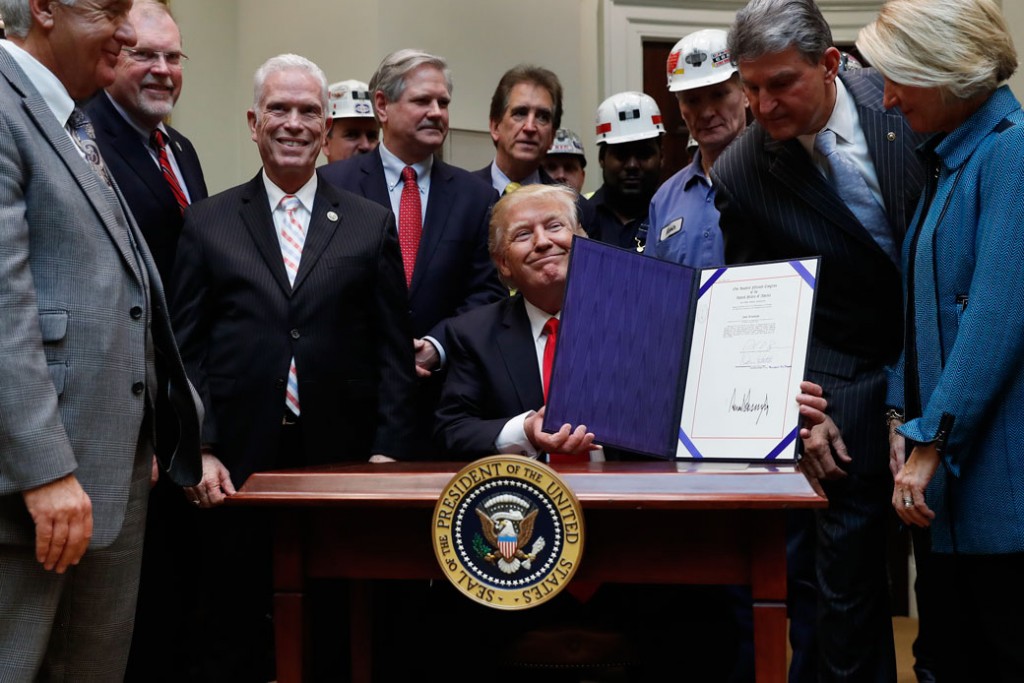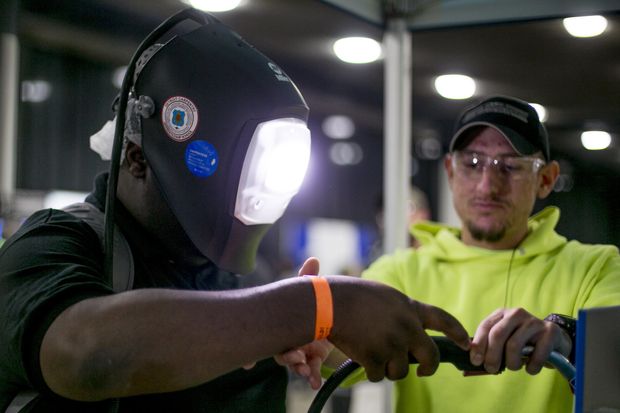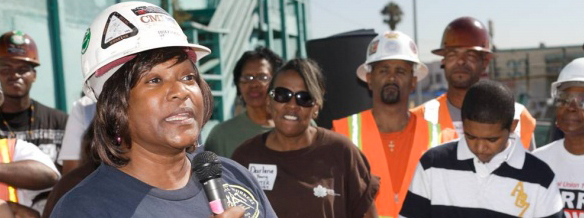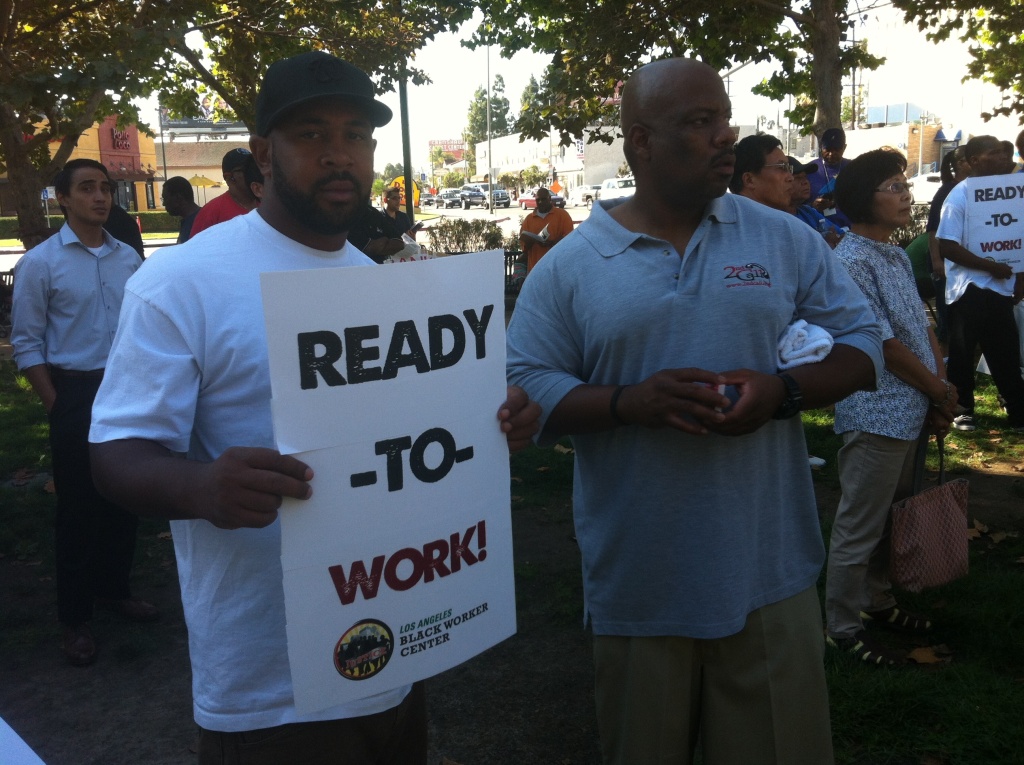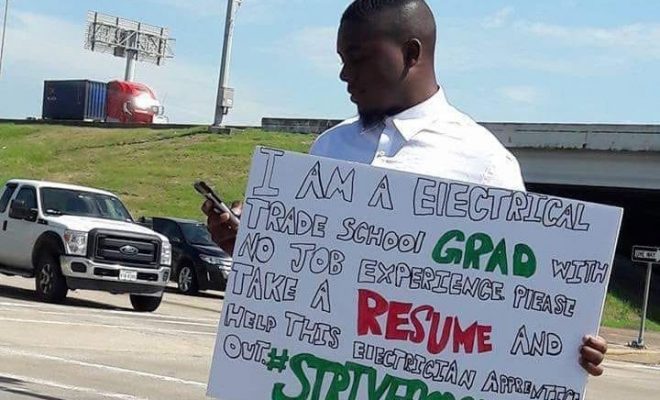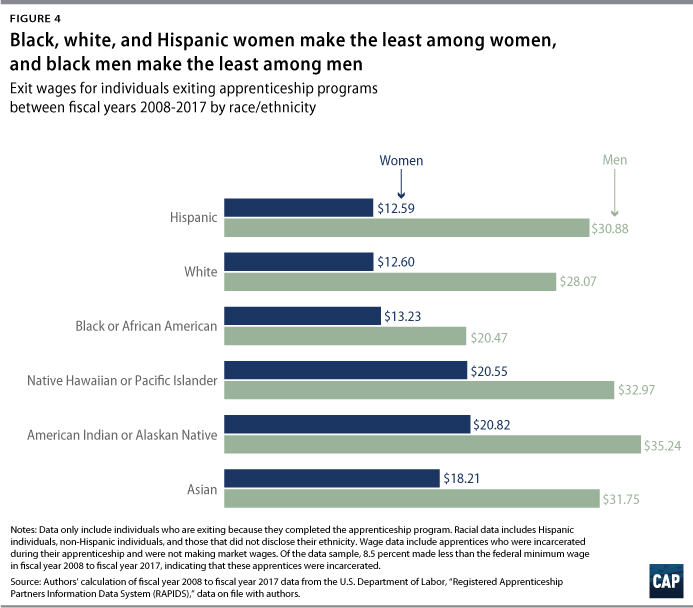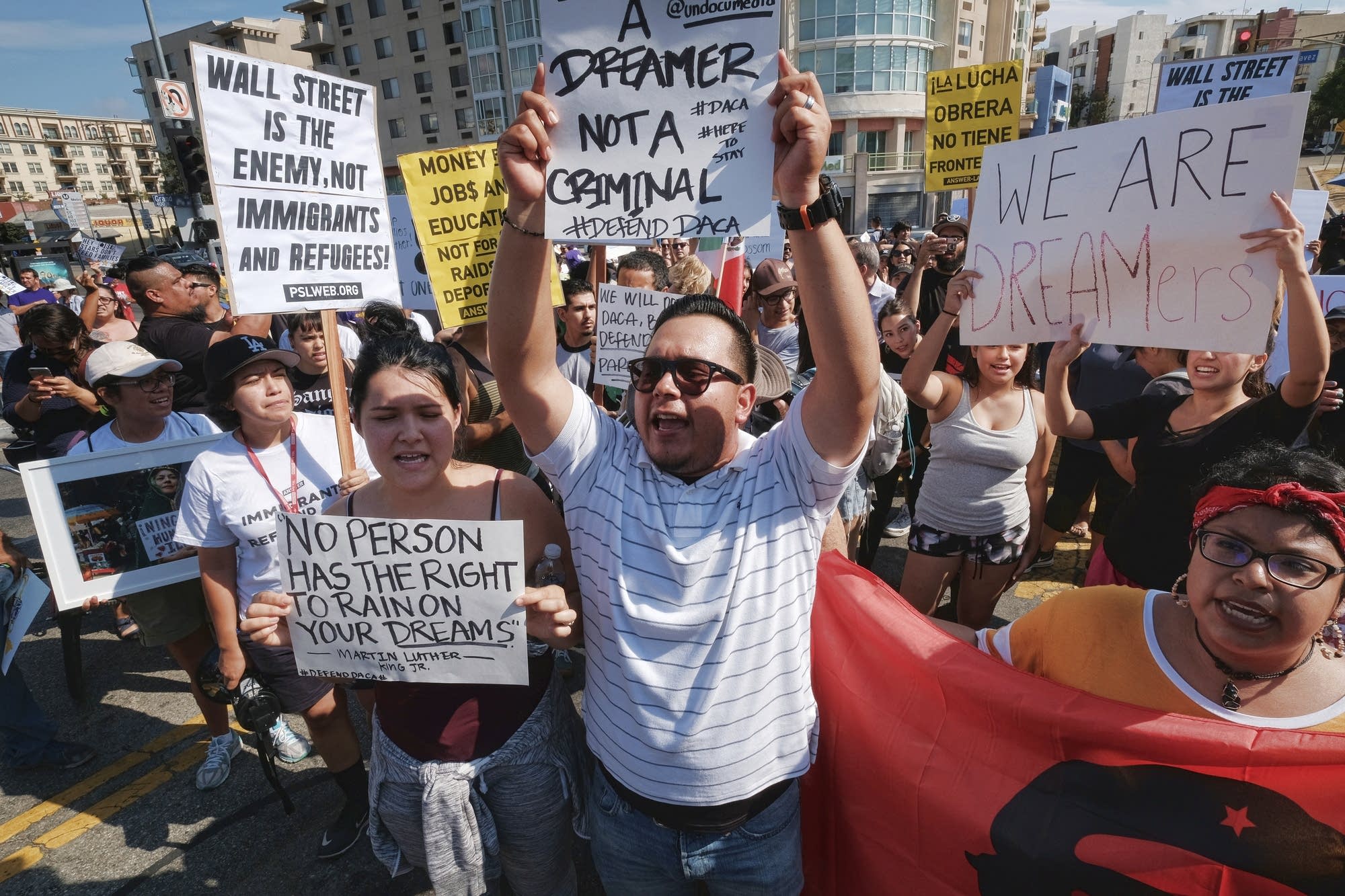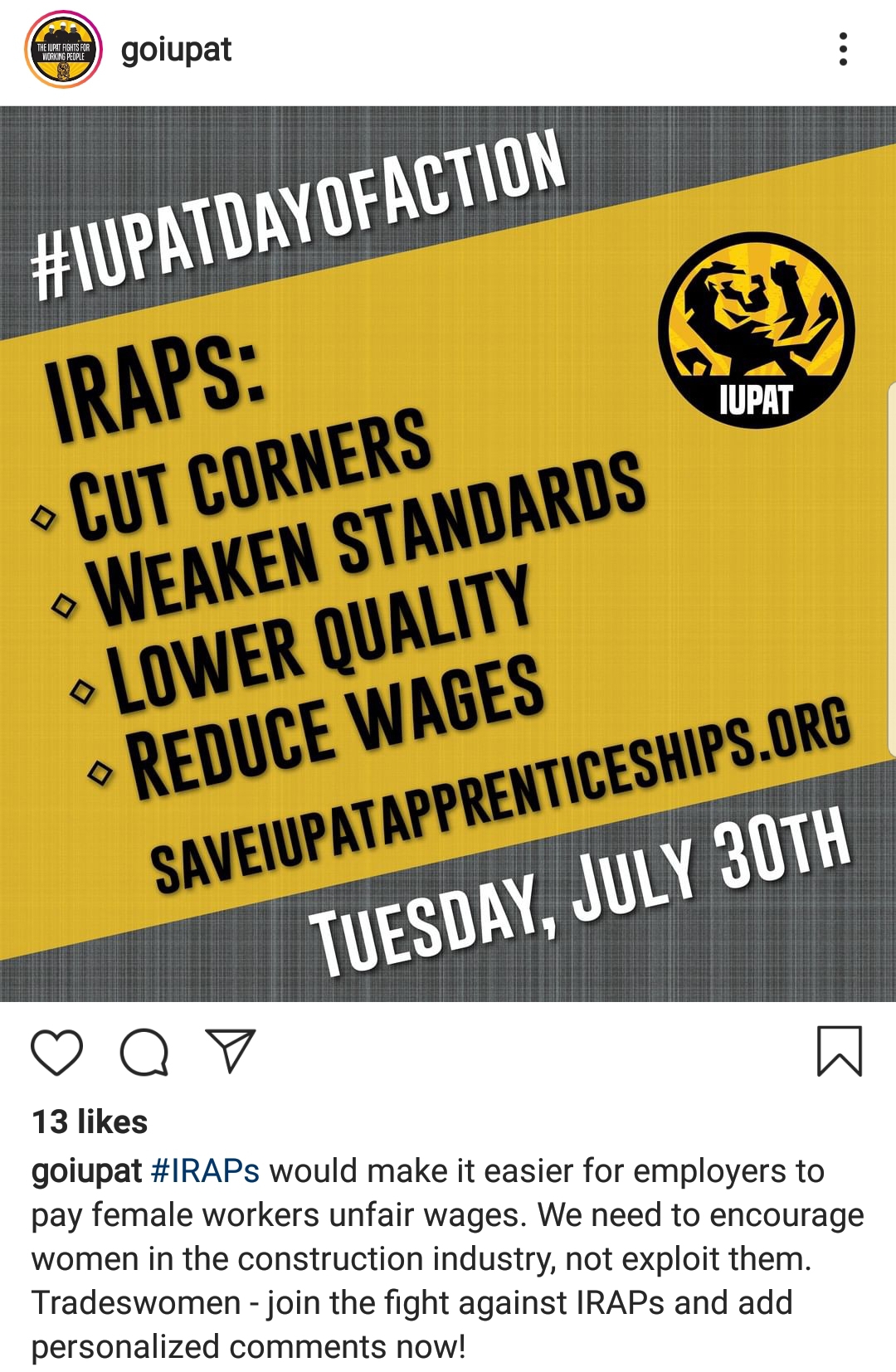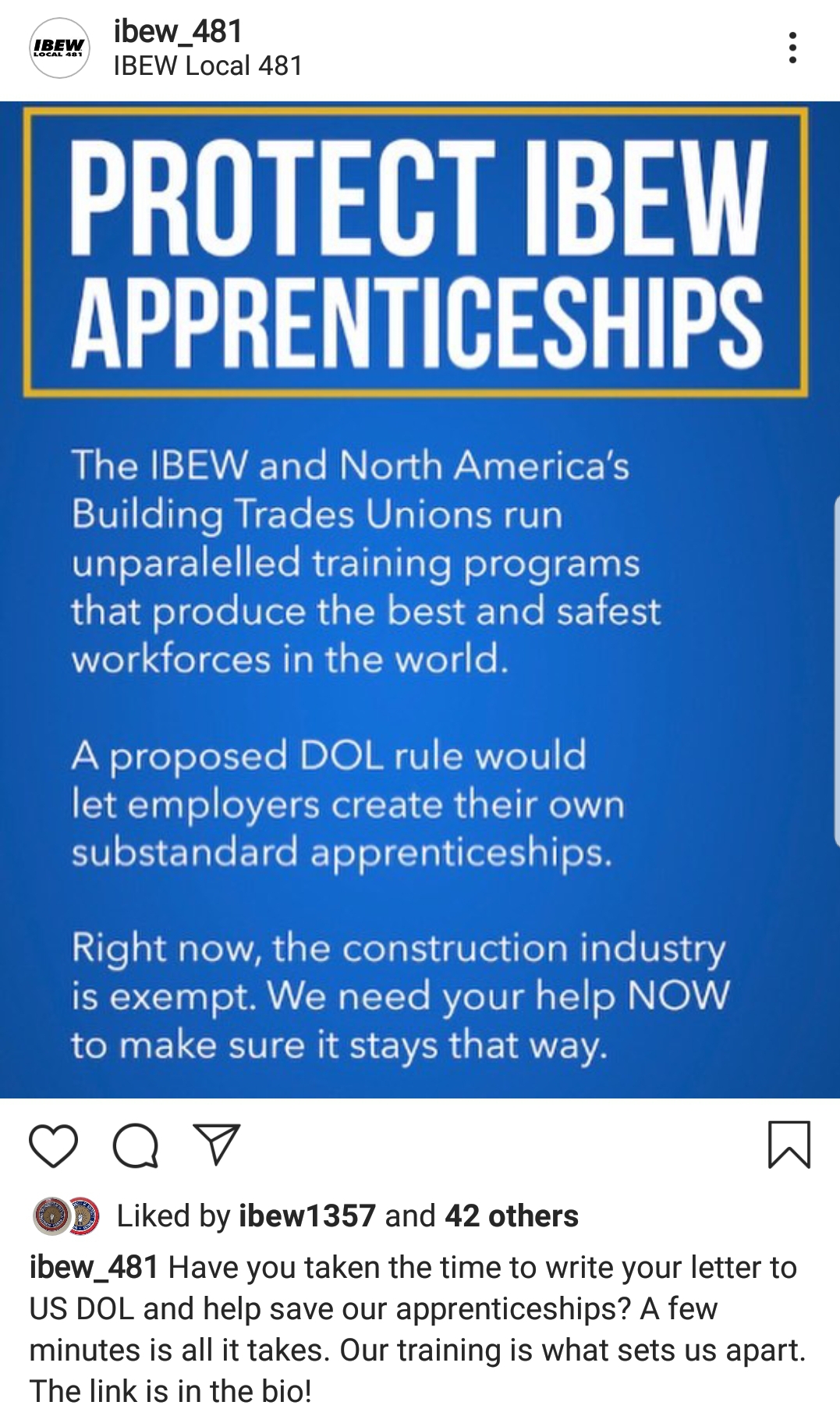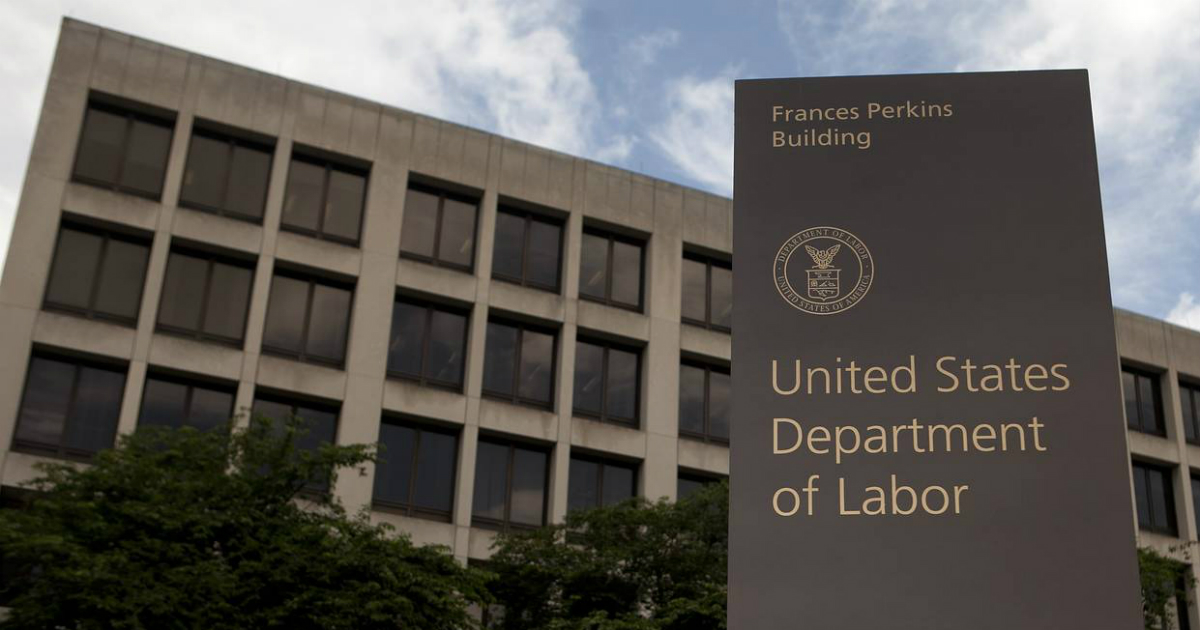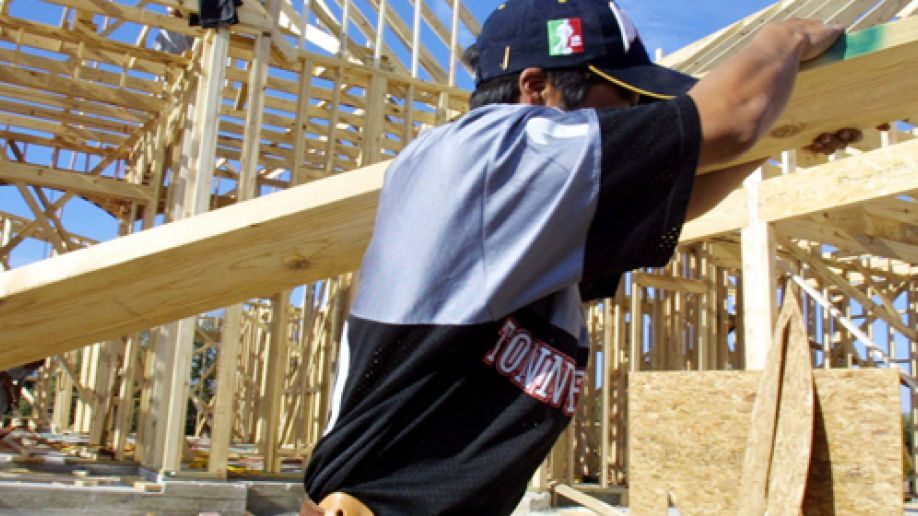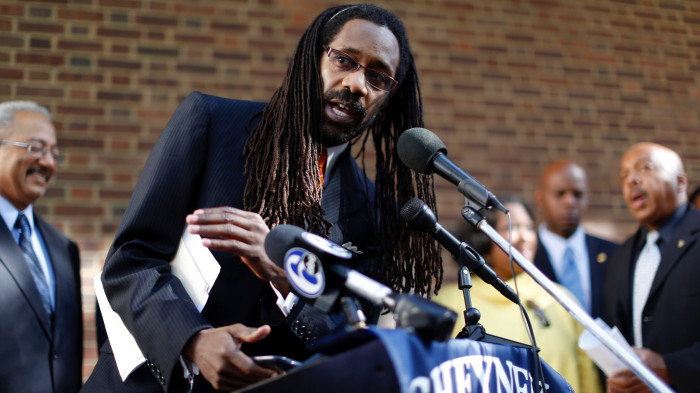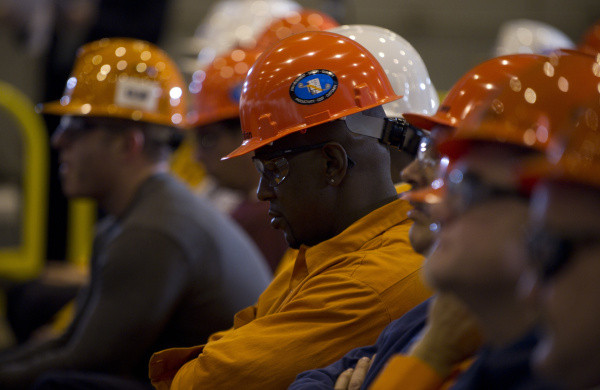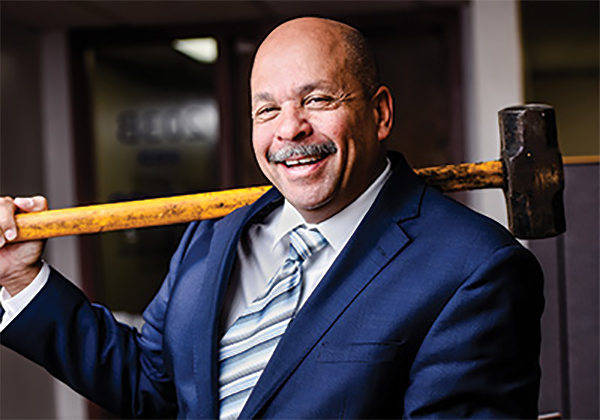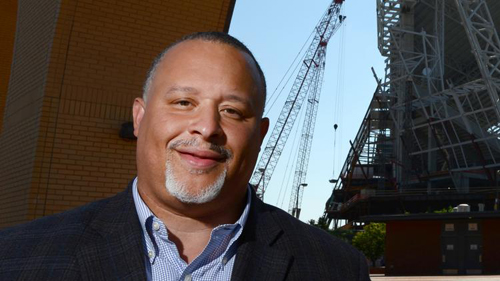Ray's article
To provide context for this article, we briefly want to
describe a traditional state approved construction apprenticeship program. It
is important to note, however, there is significant variation in both the rules
and practices across different states apprenticeship programs. Overall the federal
Department of Labor regulates and supports apprenticeship programs.
Apprenticeship programs prepare individuals for careers in various trades (mostly
in construction) using a combination of on-the-job training and course work. For example, highway trades are a specific
subset of construction work that include trades such as laborers, equipment
operators, carpenters, and cement masons. This work is generally outdoors and
physically intensive. Apprenticeship programs may be union based (i.e., all
apprentices are members of a union and employers hire only apprentices from union
programs) or “open shop” (apprentices are not union members and work for employers
who hire nonunion workers).
The American construction industry has traditionally been
marked as a very physically intense occupation and has largely been occupied by
white male workers. Although, black labor has always played a major role in the
construction of America, predating the founding of the United States, black men and black women entering the trades today experience racialized employment
practices during their apprenticeships.
It has been a well-documented fact that in the United States black tradesmen and tradeswomen have experienced harassment based on race/ethnicity
in the construction industry at appalling levels. As a black tradesman myself, who has completed a
construction apprenticeship, I would agree without exception that the hardest
part of working in the trades is not the job, but dealing with prevailing attitudes
about blacks not belonging in the trades, even at the union level.
DISCRIMINATORY
HIRING PRACTICES
Let’s discuss where the racial discrimination in the
construction hiring practice begins. A study by Roger Waldinger and Thomas
Bailey published in Politics and Society, titled “The Continuing Significance
of Race: Racial Conflict and Racial Discrimination in Construction.” argued
that black tradesmen have not attained significant inroads into construction
workforce because of the informal hiring and training practices and resistance
from unions.
In order to be accepted into an apprenticeship program,
individuals typically must be 18 years of age and hold a high school diploma or
equivalency certificate. Apprentices choose an apprentice program that will
train them in a specific trade. An apprenticeship program typically takes two
to five years to complete, depending upon the requirements of the program and
the availability of jobs. Yet, most union and non-union apprenticeship programs
do not advertise these openings in the black community nor do they conduct any outreach
programs in majority black high schools to recruit black youth.
While all apprentices are required to complete a set amount
of on-the-job training hours and course work, which differs by apprenticeship
program, the majority of apprenticeship programs training centers are often
located far from major black cities and suburbs. The distance an average black construction apprentice travels to training often creates a logistics issue. Some training centers are located more than 50 miles from black suburbs.
Apprentices attend classes ranging from basic math and
construction safety to specialized classes for their chosen trade. The
on-the-job training provides apprentices with hands-on experience under the
guidance of a journeyworker (a skilled craftsperson who completed an apprentice
program). Attaining the necessary training
on job sites is pivotal to apprentices’ success in the program and their ability
to become journeyworkers or journeyman.
And, since on the-job training is a critical counterpart to
classroom training, surmounting the racial discrimination and getting the
training is a necessity, yet an unnecessary burden for black apprentices. Aside
from the racist comments and graffiti which are so pervasive in modern American
construction culture, black apprentices also face ongoing issues with finding
work and being assigned to low-skill tasks.
In a study conducted by Kris Paap in a Labor Studies Journal
article, titled “How Good Men of the Union Justify Inequality,” found that black
tradesmen did not receive the informal mentoring on the job site that white tradesmen
received. In addition, black tradesmen were more likely to be perceived as lazy
or bad workers and they were more likely to be blamed when mistakes were made.
When a person applies to an apprenticeship program, they are
ranked based on various criteria, which varies from program to program.
Programs have an interview or a “point system,” which scores aspects of the
written application to document completed course work and previous work
experience. Some union apprenticeship
programs require the apprentice themselves to find an employer to write them a ‘Sponsorship
Letter’ which grants them entry into a labor union, upon paying entry dues.
The problem with this form of recruiting is many black
apprentice complain of discrimination while seeking sponsorship, and also complain
that their past work experience is often over looked and they are hired at
lower pay rates. For example, a tradesman or woman with 3 to 4 years of
documented work experience should be sponsored into the union as a Journeyman
or Journeywoman, but for many experienced black tradesmen with professional
experience this is not the case.
“I had 6 years of piping and plumbing experience but when I
entered the apprenticeship I was indentured in as a 1st level
apprentice, they tried to bring me in as a pre-apprentice, but I said hell naw.
A lot of guys with family connections, especially the white boys, come in as
Journeymen getting $38 an hour. I persevered and I’m a journeyman now.” - Jim, Journeyman Pipefitter, completed
program.
Those that do become sponsored or accepted into a
construction apprenticeship are put on an“eligible list” that determines the
order in which apprentice’s access jobs. As jobs become available with “training
agents” (employers associated with the apprenticeship program), applicants at
the top of the list are called and registered as apprentices. When apprentices
complete a job or are let go for any other reason by their employers, they are
put on an “out of work” list that ranks apprentices by time out of work (a
version of the out of work list is used by many, but not all, apprentice
programs).
As job opportunities arise, apprentices are called based on
the order of the list. However, as will be discussed below, construction
companies can circumvent the out-of-work list in order to maintain steady
employment with their “regular employees”.
While on-the-job training is a required part of
apprenticeship program, work is not always immediately available and jobs are
not guaranteed. One of the most prevalent issues effecting black tradesmen and
tradesmen is a lack of network, a network that they control, and a network that
they can depend upon for job opportunities. We will discuss this further below.
Construction is a cyclical industry and apprentices may be out of work for days, weeks, or months at a time. But, once the classroom work and on-the-job hours are complete, apprentices “journey out” and become journeyworkers or journeymen, who have the credentials, skills, and experience necessary to work in their designated trade at the highest pay scales. Journeymen can work unsupervised and are responsible for training new apprentices. They often go on to become foremen, supervisors, or superintendents.
There are many aspects of apprentice programs that are (on
the surface) equitable and race neutral: apprentices are accepted into programs
using standardized criteria; in some apprentice programs, jobs are assigned
using an out-of-work list; in some apprentice programs, employers are not
allowed to request specific apprentices; employers may not turn down black
workers or women; and apprentices at the same level are paid the same wage
(thus eliminating the possibility for a gender or racial/ethnic wage gap
between workers with equal experience). However, drawing on many studies we
examine how racial/ethnic inequalities still persist in apprentice programs,
despite these apparently race-neutral policies.
Today, across the United States, the construction workforce
as well as apprenticeships primarily consists of white males, and some states
have sought to diversify recently targeting funds intended to encourage “women”
and so-called “people of color” to enter into the trades; but no state has created
any programs that specifically increase retention of black workers, primarily
apprentices. Black apprentices across the United States remain a small portion of
new apprentices and there are continued issues with retention of these black men
and black women. As noted above, there are many aspects of apprentice programs
that are (on the surface) equitable and race neutral.
GOOD OLD BOYS CLUB
As stated above, the construction industry is a white male
dominated industry. In our study understood the apprenticeship system (and the construction
trades more broadly) to be a “good old boys’ club” (a combination of the
phrases “old boys’ club” and “good old boys”), that is, an occupation dominated
by working-class white men and built upon relationships among these men.
The experience of many black apprentices in the trades as a
“good old boys’ club” has resulted in subtle (and sometimes not so subtle)
exclusion and harassment. The discrimination that some black apprentices face
has damaged their access to relationships with journeymen, foremen,
supervisors, and other workers on their job site. This, in turn, has affected
their opportunities to be mentored and ultimately their ability to remain
consistently employed.
Apprentices are more likely to be successful if they are
able to remain more steadily employed, either by staying with a company and moving
from project to project (avoiding the out-of-work list) or by limiting their time
on the out-of-work list and finding work quickly after being layed off.
Statistically, across the United States black male
apprentices accrue fewer work hours per month than white male apprentices. Too
much time unemployed between jobs is a major factor that often deterred many black
apprentices from completing their apprenticeship programs. Many black
apprentices believe that the frequent layoffs are purposefully done to make it
difficult for black apprentice to compete.
Speaking under anonymity, a current black male union
carpentry apprentice told Blacktradesmen.us that, “I did everything right, I
passed all of my inspections, I showed up 30 minutes early everyday, I brought
my own water, I never got a safety violation, but they two checked me. I just
did my job, but that wasn’t enough, with all the stupid black jokes they made
it wasn’t worth it.”
Two checks meaning ‘layed off’, an expression used throughout the construction industry on describing how a foreman or superintendent fires a tradesman by providing him with both of his payroll checks, severing all relationships.
One specific problem that some black apprentices face in the course of their on-the-job training, they did not have opportunities to learn all the varied skills they needed to be successful journeymen, as a challenge to completing their apprenticeship. While some studies show, black workers were the most likely to identify doing repetitive or low-skill tasks, while white men were the least likely of all groups to be assigned repetitive or low-skill tasks (such as cleaning the site or flagging traffic).
YOU’RE NOT LAZY!
The legitimacy of a lack of black apprentices in the trades
is bolstered by a reliance on the belief that success is primarily due to hard
work. While apprentices articulate the many challenges that they face, when
specifically asked why some apprentices do not succeed in their apprenticeship program,
“not working hard enough” or “being lazy” were consistently given as the
primary reason by apprentices. But the perception
of who “workers harder than others” is often bias based upon racial stereotypes.
“Head down, ass up. Pretty much. They just got to stay at
it. You can’t be lazy about it. You have to stay working, you have to stay
busy.” (Dave, Black male, completed apprenticeship)
Apprentices with a “poor work ethic” or perceived as working
not as hard as others on the job site, or those that would not (or could not)
learn the necessary skills, and those who had a bad attitude at work are most
often equated with being “lazy.” The stereotypical label of “laziness” has plagued
black workers since slavery, and is one of the most prevalent stereotypes used
against black workers today.
BUILD A NETWORK
The importance of black tradesmen and tradeswomen to network
and build strong relationships amongst one another is key to their success. The
lack of network and industry connection has made things harder for black
apprentices who are frequently out of work. The lack of a brotherhood outside
of the “union brotherhood” is missing for black tradesmen and women. Since
forever, networking in construction is an essential aspect you must develop.
Relationships and connections within an apprentice’s network
are important to have more opportunities to advance their careers. Attending union
meetings and social events are also important apprentices seeking to advance
their industry connections. www.blacktradesmen.us
is also a great tool to connect with people in their field.
The pervasive harassment (particularly racial discrimination) that black Americans in construction face as well as the strategies they use to respond to negative experiences at work is hurting black tradesmen and women fighting to complete construction apprenticeship programs and reach the status on Journeyman or Master level professionals. The lack of an internal network can exacerbate this condition for black apprentices.
We hope that our on going research adds to an understanding of
how organizational policies and discriminatory practices, are causing in racial
inequalities in construction work organizations
In exploring the experiences of black apprentices, we contribute to an evolving understanding of how apprenticeship programs across the United States works. Through assessing these processes, we hope to contribute to conversations about the changes in the construction industry as well as broader policy debates aimed at addressing racial/ethnic inequality in the industry.
Last week the City of Oakland hosted their first of a series
of three ‘community engagement meetings’ to discuss the future of construction
development in the city’s urban communities.
Bay Area building trades unions are expected to back the
implementation of a ‘Project Labor Agreement (PLA) or what is also referred to
as a ‘Community Workforce Agreement’ (CWA) that would require developers to
hire only union labor and contractors for projects that are built on Oakland
city-owned land and or any project that involves city funding.
Local area black contractors and black tradesmen attending the
first outreach meeting last Thursday in East Oakland were concerned that they would
be excluded from job opportunities on future city projects in their own
neighborhoods and surrounding areas, if a PLA was implemented without
protections to black tradesmen and companies.
Speaking at the first
city held meeting, according to Post News, black contractor Eddie Dillard said,
“A Project Labor Agreements benefits white contractors. 90% Black contractors
are non-union.”
Many bay area building
trades unions, who dispatch workers to projects have been historically
segregated, and majority white organizations, admitting almost no Black
workers. And historically, these labor unions have been unwilling to release
data on racial composition within its workforce.
“We have been
asking the unions for 10 years how many African American members they have,
but they have refused” to release the data, said Dillard.
Most of those
locals “have zero Blacks in them,” Dillard said.
Union training
programs are not located in Oakland but in outlying areas, like Benicia and San
Jose, he said. “We have been asking the unions for 10 years how many African American members they have, but they have refused” to release the data,
Dillard said.
The construction industry in Oakland and across the United
States has a long recorded history of racial discrimination within its
workforce. Oakland, CA has a long history of black tradesmen and contractors
fighting for the fair treatment of their brothers and sisters in the trades,
such as
Construction is hands down one of the most lucrative and
rewarding careers for young black men in the United States without a high
school, but yet thousands of them have been discriminated against, and in some
cases completely locked out of an industry that their black forefathers
spearheaded in America 400 years ago.
Recently, the
unemployment rate for black people in the Bay Area reached an alarming 19% just
6-years ago, according to 2013 U.S. Census Bureau data, and although the
unemployment rate has gone across the state, many black Oakland residences have
not felt the change.
In contrast, a 19%
unemployment rate for white workers would be declared a city emergency if that
data was true.
While a traditional
PLA could benefit the over 30 unions in Alameda County, black construction
tradesmen and contractors are worried that if the PLA agreement is improperly implemented it would further solidify
the staunch racism and discriminatory hiring practices running amuck in the Bay
area construction trades unions.
The Oakland city council is expected to come to some type of agreement with the politically powerful labor unions and implement a PLA. Currently, there is no formal Project Labor Agreement (PLA) on the table for the city to consider.
But what about the
black working class citizens of the city, the voters, the black men and women
who build the city and are pushed to the wayside thru racist practices?
Darlene Flynn, director of the Department of Race and Equity
in an interview with the Oakland Post,
said “in evaluating how an agreement might be written to produce more equitable
outcomes, we need to look at the barriers, and it’s best to talk to those who
are closest to the challenges.”
In fact, cities and states are increasingly adopting
“targeted hire” standards and pre-apprenticeship programs to ensure that local
residents and historically disadvantaged black residents, low-income residents,
and residents with past involvement with the criminal justice system are able
to obtain construction jobs created with the support of public expenditures.
San Francisco, for
example, has significantly expanded access to publicly supported construction
projects by mandating that local residents complete 30 percent of a project’s
total work hours and 50 percent of its apprenticeship hours as well as by
partnering with industry, labor, and community nonprofits to create an 18-week
pre-apprenticeship program.
And the Los Angeles County Metropolitan Transportation
Authority adopted a policy in 2012 that requires that 20 percent of employees
on construction projects be apprentices and that 10 percent be from
disadvantaged communities.
However, President Trump is undermining the power of these
sorts of programs to raise standards for working people. In 2017, the Trump
administration announced that it was ending a pilot program at the U.S. Department
of Transportation that allowed communities to establish local hire preferences.
Often acclaimed as effective, pre-apprentice
programs have been a way for construction companies to pay workers less for the
same work, and is also a way for some non-profits to act as a gate-keepers to
the construction industry, often assigned with the task of filtering through potential
black tradesmen to find the best candidates for entry level work that tradesmen
of other races are outright hired for without completing a ‘Pre-apprentice
program.’
Currently, the Trump administration is establishing a parallel apprenticeship system that will allow third-party industry groups outside of the construction trade unions to develop construction apprenticeship programs accredited by institutions approved at the Federal level by the Department of Labor.
And although sometimes
effect at recruiting talented black tradesmen and women, these types of pre-apprentice
and apprenticeship programs do not help veteran black tradesmen and women at
all remedy work force discrimination they encounter on a daily basis at
job-sites across the U.S.
And although
President Obama took executive action to ensure that companies comply with wage
laws, and anti-discrimination protections before they receive federal
contracts, President Trump signed legislation to roll back some these
protections before they were fully implemented.
Lawmakers in Congress should require companies that apply
for federal infrastructure funds to report on their record of compliance with
workplace laws. If they have a poor track record, lawmakers should require them
to come into compliance before they are able to receive any federal funding.
In Oakland, “These
are questions that need to be asked and answered,” said Flynn.
“In these meetings, we are trying to find out who has been
affected, what their experiences have been, who might benefit and whether they
ran into barriers that have resulted in the disparities that we see, looking at
how we can incorporate ways to offset these barriers,” said City of Oakland
Employment Services Supervisor, Jonothan Dumas, according to Post News Group.
Some of the questions
the city wants to address:
*Should a defined
percentage of the hours on city projects go to local workers (such as 50
percent)?
*Should there be a
requirement to hire the formerly incarcerated?
*Should some of the
jobs be reserved for people who live in certain Oakland zip codes?
*What should be the
requirements for hiring local apprentices?
*Should there be
funding for training and removing barriers to employment?
The next community
engagement meeting will be held Saturday, Aug. 10, 10 a.m. to noon, at the
West Oakland Youth Center, 3233 Market St. in Oakland.
In conclusion, while
community organizations, labor organizations, training intermediaries, and the
public workforce system have made significant progress in recent decades to
expand access to construction trades, more must be done to organize black workers and expand the scope of
high-quality apprenticeship programs and increase access and pay for
historically disadvantaged black communities.
Apprenticeship programs can and should be a broadly
accessible path to high paying careers that pay a living wage. However,
currently, too many workers, particularly black/African American workers - face
difficulties accessing these programs, especially the programs that pay the
highest wages.
The U.S. system of registered apprenticeship has been responsible for putting more Americans into the middle class over the last 80 years, than any other form of education in the U.S.
Apprenticeship is, hands
down, the country’s most effective education and employment model, especially
for the construction industry. Imagine earning a quality education, graduating
with no debt, and transitioning directly into a career paying more than $60,000
a year, this is a reality for most apprentices in America.
But, in contrast to the German and Swiss apprenticeship
systems, where upwards of half of all young people, millions of them are
prepared for a range of careers through apprenticeship; whereas the American
system serves just over a half a million apprentices in any given year, and
prepares them primarily for careers in the skilled trades.
Aside from the traditional construction related apprenticeships, the Trump administration over
the past 2 and a half years has embarked on a mission of expanding
apprenticeship programs into new industries, such as health care and
information technology, with a goal of better connecting these apprentices to
higher education.
The Trump administration in fact, is building an entirely
new system of ‘industry-recognized apprenticeship programs,’ or IRAPs.
TRUMPS IRAP’s ARE
EXPECTED TO CHANGE THE GAME
IRAP was born out of President Donald Trump’s 2017 Executive
Order to Expand Apprenticeship in America.
In section 8 of the order, the Secretary is directed to establish a Task
Force on Apprenticeship, bringing together industry and workforce leaders to
consider how to promote apprenticeships especially in sectors where they are
insufficient.
The Presidents program is designed to expand apprenticeship
opportunities and give business more say in crafting training programs.
Although the construction industry is lacking trained, qualified skilled
workers at a record number, in its roll out, the administration will exclude
the construction industry from participating in the IRAP.
Effectively, privately ran IRAP’s will massively overhaul
apprenticeship regulations, and be governed by a distinct set of new
requirements, and quality-assurance processes that, the administration argues,
will make it easier for sectors like IT and health care to adopt apprenticeship
programs, and closely institute them under federal employment guidelines, such
as anti-discrimination policies which for years have been outright ignored by
some unions and privately recognized apprenticeship programs.
As the Trump administration continues to make investments
necessary to grow apprenticeship programs, their policies must center on
helping black workers, and other underrepresented groups to ensure equitable
access.
There is a lack of resources and social networks in the
black/African-American community to get into many high paying jobs, especially
those that lead to long-term careers like the one’s apprenticeships provide.
Apprenticeship programs offer one of the few career pathways
to people without college degrees, with few skills or with criminal records.
But entry into union ran apprenticeship programs are extremely competitive.
For the highest-earning apprenticeship programs, like electrical and sheet metal work, applicants must pass an entrance examination that tests math skills, among other abilities, and then interview for these positions under adverse scenarios, many times battling internal hiring practices such as nepotism.
This is why the Trump administration and the DOL
must include the construction industry into it’s IRAP initiative.
BLACK APPRENTICES FACE DISCRIMINATION
Although, Registered Apprenticeships are apprenticeship
programs that are registered with the DOL and are governed by regulations laid
out under the National Apprenticeship Act.5, and although these regulations lay
out labor standards for these programs and govern their Equal Employment
Opportunity (EEO) rules, many black/African American apprentice file
complaints, and lawsuits claiming damages due to massive amounts, and sometimes
organized acts of discrimination and exclusion from federally recognized
apprenticeships.
Currently, EEO rules prohibit apprenticeship sponsors - typically employers or unions—from engaging in discrimination, as well as require them to take affirmative steps to ensure EEO, including efforts to recruit from a broad pool of potential apprentices. Furthermore, programs with five or more apprentices are required to develop a written affirmative action plan and conduct an apprenticeship utilization analysis to ensure that they are drawing adequately from the local pool of available workers.
Yet in 2017, 63.4 percent of individuals who completed
Registered Apprenticeship programs were white, 10.7 percent were Black/African American, and 20.5 percent did not provide their race to their
Registered Apprenticeship sponsor at all.
According to many studies, one challenge in identifying
trends in apprenticeship participation by ethnicity and race is that the share
of those who do not provide their ethnicity or race. The lack of reporting has
increased significantly over time with Hispanics, with 29 percent of Hispanic
apprentices refusing to provide their Hispanic ethnicity in 2017—up from 3.3
percent in 2008.
Policymakers insist that this issue should be resolved immediately as more accurate data on the racial and ethnic composition of apprentices are necessary to conduct a fair equity analysis.
BLACK APPRENTICE FACE
UNFAIR COMPETITION
In many cases after completing stringent and intense union
ran apprenticeships, black/African-American apprentices find it difficult to
find work.
Black/African American apprentices had the lowest exit wages
of all racial and ethnic groups examined, at $14.35 per hour in fiscal year 2017.
White apprentices had the second-lowest earnings at $26.14; although white apprentices earned more than 50% more than Black/African American apprentices’ wages.
Median wages for Hispanics/Latinos completing apprentices
were the highest as they earned around $30 per hour.
One of the reasons that wages for Hispanics/Latinos apprentices are so much higher may be that they are more likely than black and white apprentices to complete their apprenticeship programs in Western states versus the south.
From fiscal year 2008 through fiscal year 2017, exit wages
for apprenticeship programs were highest in Western states at $32.50 and lowest
in the Southern states at only $20.80.
DACA
Another reason for the huge difference in wages amongst Black and Hispanic apprentices can also be attributed to large populations of 'non-citizen Hispanic' workers in Western states that are participating in the workforce,aat the union and non-level.
Many DACA recipients are also members of union ran apprenticeships, using employment
authorization cards (work permits), often issued through the Deferred Action
for Childhood Arrivals program known as DACA that President Barack Obama created
in 2012.
The DACA program, which was established without congressional approval, has protected 670,000 undocumented immigrants from deportation and enabled them to get work permits, and enter into apprenticeships, these people are commonly referred to as 'DACA recipients'. or'Dreamers.'
This work permit not only gives illegal alien workers the right to work in the U.S., it also creates unfair competition for native born, foundational black American apprentices seeking employment in the same trade fields.
The Trump administration and his justice department is preparing to end the DACA program altogether, which has prompted the Supreme Court to intervene, the court’s decision on rather its lawful for Trump to end the DACA program iexpected to be decided in the midst of the 2020 presidential election.
HOW WILL TRUMP
FIND FUNDING FOR IRAP’s?
“I don’t think
there’s going to be any takers because there’s no money,” a trade group
lobbyist told Bloomberg Law.
The Labor Department’s (DOL) announcement about the
implementation of this new nationwide apprenticeship program has some unions
and trade groups at arms with the department. Although the Trump administration
has not allocated any federal funding for these IRAP’s, that may be changing,
as it seems increasingly likely that the IRAP programs will become eligible for
federal funding.
According to Bloomberg Law, the Labor Department has a few
places where it can look for cash to fund IRAP grants if Congress decides not
to specifically appropriate money for the program.
That includes using funds allotted for the H-1B visa
program, which the DOL has wide latitude to spend as it sees fit. The H-1B visa
program offers temporary employment permits to foreign workers in the U.S. tech
jobs and other specialized occupations.
President Trump has mentioned his planned overhauls for the
H-1B program in the past, and has stated that he may reallocate funds from this
program to benefit American workers thru IRAP’s. In fact, late last summer, DOL
issued a funding opportunity announcement (FOA) outlining $150 million in grant
awards for apprenticeship programs, derived from fees paid by employers to
sponsor H-1B visas for workers coming from abroad.
Congress, both republicans and democrats, continue to demonstrate
their support for expanding apprenticeship programs. In 2016, DOL received $90
million in the first-ever congressional appropriation targeted specifically at
apprenticeship expansion. Since then, this amount has climbed steadily—$95
million in FY 2017, then $145 million in FY 2018, then $160 million in FY 2019.
And, although the Department of Labor has established that
IRAPs will not initially affect the construction industry or military apprenticeships,
many labor unions see IRAP’s as a future threat to their long established apprenticeship
programs.
UNIONS PREPARE FOR
WAR
Jim Reid, the apprenticeship director for the International
Association of Machinists, said the DOL’s efforts to fast-track the establishment
of IRAP’s has purposefully left out many union voices.
While many unions and trades groups are arguing that
privately ran IRAP’s pose a threat to their established apprenticeship programs, that have been historically white,
many others argue that IRAP’s will offer opportunities, and specialized training
to black workers that are employed more than 50% as non-union workers, and are
excluded from union ran apprenticeships at alarming numbers.
Worried that IRAP regulations and accrediting standards will
eventually crossover into the construction industry, many labor unions are
warning the Trump administration against such action. Union representatives are
warning Trump that if his administration winds up breaking from its commitments
to exclude construction in the proposed rule, the building trade unions are
prepared to abandon their support of Trump.
A brief look at many labor uniots twitter and Instagram pagess over the weekend show that union leadership is preparing to mount a public campaign attacking IRAP’s and the administration for what they feel will undermine union-protected wage and safety standards, a building union lobbyist told Bloomberg Law.
At the moment some White House officials have been advocating for construction industry inclusion, a reversal on what Trump initially proposed, analit is alienating the blue collar organized union labor groups that Trump has been, and will be counting on for support in his 2020 re-election bid.
In it’s current form, the national apprenticeship system
sponsors of programs - employers, unions, community colleges - have to register
with a state or federal apprenticeship agency that, in turn, determines whether
their programs meet a set of regulatory requirements on things like program
length, balance of on-the-job training versus classroom instruction, and the
apprentices’ wages and working conditions.
IRAP REGULATIONS & UNION APPRENTICESHIPS
Under the Trump administration’s proposal, programs could seek formal recognition from the Labor Department through a new system of “program accreditation.”
To accomplish this, the Labor Department is planning
to recognize more than 70 individual IRAP “accreditors” and grant them
authority to determine if a program meets a set of high-quality apprenticeship
standards that the department spelled out earlier this year.
NABTU, an umbrella group within the AFL-CIO that represents
15 individual building trade unions, has supported the Trump administration,
but that would all change if builders, mainly non-union builders are allowed to
take part in IRAP, a building trade’s official said. At that point, the trade
unions would organize members to accuse the administration of betraying
commitments to blue collar workers, the official said, speaking with Bloomberg
Law on condition of anonymity.
Yet, the administration contends that The National Apprenticeship Act (NAA), 29 U.S.C. 50, authorizes the Secretary of Labor “to bring together employers and labor for the formulation of programs of apprenticeship. The U.S. Department of Labor (the Department or DOL) proposes doing so through a new program recognizing Standards Recognition Entities (SREs) of Industry-Recognized Apprenticeship Programs (Industry Programs).
This
new program is intended to harness industry expertise and leadership to meet
the United States’ skills needs in the twenty-first century.
Opponents of IRAP’s also argue that the proposed quality-assurance process for IRAPs closely resembles the national accreditation system of for-profit career colleges and trade schools.
Unions and other opponents of IRAP's say that IRAP’s will not be properly regulated for quality-assurance by the government, and will enable the rise of multiple accreditors with overlapping jurisdictions and competing standards, and will not provide clear mechanism for holding accreditors or programs accountable for poor outcomes.
In response the DOL proposes that the new IRAP Standard
Recognition Entities (SREs) will be recognized for 5 years. The SRE must
reapply if it seeks continued recognition after that time, using the same
application form it submitted initially. The Department proposes a 5-year time
period to be consistent with best practices in the credentialing industry.
IN CONCLUSION
The President and policymakers working to expand apprenticeships
should also work to eliminate occupational segregation in apprenticeship
programs to ensure that black/African-Americans have access to apprenticeship
programs in the highest-paying occupations.
Policymakers should also ensure that new IRAP regulations include the construction industry, while also ensuring apprenticeship programs
are required to comply and support wage progression policies that help ensure
that the highest-wage programs remain well-paying.
Furthermore, policymakers should seek to expand
apprenticeships into new industries, such as IT, healthcare, and childcare,
while increasing wages across the board.
As our network has reported in the past, the massive corruption that plagues one of the largest industries in the United States, construction, has never been fully remedied, and it is alive and well in 2019. The blood and sweat that has been poured out by black tradesmen and women in the hope of realizing the American dream, has always been undermined by secretive organizations, pacts, and industry gangs.
‘Mexican Cliques in Construction’, a book by thirty-year Hispanic carpenter Ricardo Charles, details a story of racism, fraud, discrimination and organized crime that is controlling the construction industry across the state of Texas.
In his interview with reporter Greg Groogan, of Houston’s FOX26, Ricardo Charles was asked if black construction workers were welcome on construction sites in Texas. Charles said, "Oh no, blacks, they are out of the question. Blacks are out of the question. Nobody wants a black person in there." Charles, a US Army Veteran, was speaking about what the "cliques" would say about black tradesmen in the workforce.
Mexican racism plays a major part in keeping out blacks workers. Charles says those who run organized construction “cliques”, largely Hispanic crews almost never willingly hire black construction laborers.
The practice of rejecting black labor is deeply entrenched discrimination which extends to white workers as well, Charles said.
"They have these groups that are going to harass you, they want to insult you, degrade you. They want to make it very, very hard on you. They want to make false accusations about you: that you don't know how to do the job, you don't know how to talk to them, but they are all in the same conspiracy. It is a gang, like organized crime," Charles said.
For years Black tradesmen and women have been targeted by these secretive Mexican labor gangs according to Charles, effectively cutting black workers off from decent-paying construction. According to Ricardo Charles, Mexican groups conspire to keep jobs for themselves in industrial construction, and work with construction contractors to keep black tradesmen and women unemployed.
In an interview with Bob Price, Charles stated,"Corruption has been going on inside the plants for many years, but today's workforce comes with a culture of bribes. The Mexican culture of bribery makes it hard for ordinary citizens to be part of the workforce. However, these cliques help the employers by controlling the job sites by driving out 'unwanted' new workers. Anybody who disagrees with an unlawful act gets terminated."
"The traditional way of hiring through human resources has changed. Corrupt supervisors and managers inside do the hiring and firing giving preference to relatives and friends who, on occasion, pay to obtain the job. The employee of choice is the one who can be manipulated and does not report criminal acts. Eventually these type of workers join the existing group adding more crime into the system." Charles continued.
This evasive form of discrimination and nepotism being practiced throughout the industry is causing thousands of talented black construction workers to become bitter and discouraged. Recently in Atlanta black tradesmen confronted a Mexican construction worker who hung a noose on the job site. The noose incident in Atalanta and other cities, is provoking racial tensions that already exist, and these types of situations could have very ugly outcomes.
Since many millions of Mexican workers do not speak the official language, they commit fraud by cheating on the NCCER certifications and safety exams. Charles says they are supported by employers with no rights for the ordinary worker; they are organized criminals, and terrorist.
Over dozens of years and hundreds of sites across Texas, including the giant petrochemical complex in Port Arthur, he says Mexican construction cliques have muscled honest workers out of millions of dollars.
Money that's made gang bosses rich. He's talking about bribes. They call it "Mordida" in Mexico, the bite.
"This is actually just like in Mexico. It's not how much you know, it's who you know," Charles said. "Everybody knows. Yes, many people know that you have to belong to a clique in order to work. Mexicans exploiting Mexicans and contractors looking the other way," he said.
There's nothing casual about his allegations. Everything he's witnessed:
-- The "pay for play"
-- The graft
-- The enforced silence
-- And the corrupt complicity of contractors
He has also brought his allegations and evidence to the FBI.
It’s all recorded in his book “Mexican Cliques in Construction,” Twelve chapters including the author's background with more than thirty years experience in construction in 244 pages. Copies of "Mexican Cliques in Construction" can be obtained by contacting Ricardo Charles through his email address: ricardocharles46@hotmail.com.
Black tradesmen and women must Organize! Organize! Organize! And recognize what how deep the bribery and discrimination in the construction industry runs, and how they are being targeted. Black construction tradesmen and women in the United States descend from a linage of master tradesmen and craft-workers, and only by organizing their labor and talents together as a single force will they ever realize true success & potential in this industry that has a notorious history of racial discrimination.
Join our site today and network with black construction professionals from all trades across the United States!
One year ago a lawyer by the name of Michael Coard wrote a
seven part series for the Philadelphia Tribune exposing the blatant racist
practices of the construction industry in the Philly metropolitan area, and how
the city council was being“pimped” by the labor unions.
In his brilliant article titled, ‘Is Council pimped out to racist labor unions?’ Coard exposed now federally indicted, John “Johnny Doc”
Dougherty, Business Manager of Philadelphia Building and Construction Trades
Council (PBCTC) as well as of Local 98 of the International Brotherhood of
Electrical Workers (IBEW).
Attorney Michael Coard (photo above), who serves as an Adjunct Professor
at Temple University, and according to his Twitter profile is an, “African,
Attorney, Radio & TV Host, University Professor, Newspaper Columnist, and
Magazine Journalist- but mostly just The Angriest Black Man in America,” exposed
how in 2016 “Johnny Doc” and his PBCTC, a group of “white suburbanite men” were
responsible for nearly 65 percent of small, city-funded construction projects,
while having absolutely no Blacks whatsoever on the workforce in a city with a
Black population approaching nearly 50 percent.
And According to Coard, “as of 2013, when the most reliable
figures are available, about 80 percent of PBCTC carpenters, electricians,
painters, etc. were white.”
“Although I’m not (yet) saying he, personally, is a racist,
I am unequivocally saying his policies are blatantly racist and the unions he
controls are blatantly racist because I do have incontrovertible evidence of
that. And it’s the direct result of what we lawyers call “disparate impact.” In
other words, while it’s relatively difficult to prove what’s in a person’s
head, it’s easy to prove the effect- or impact- of what’s in his/her head. That
is done by simply looking. And what I see in Dougherty’s policies and unions
are racially ugly,” Michael Coard said in his Tribune article.
According to the Philadelphia Inquirer, John “Johnny Doc” Dougherty
spent 25 years controlling some of the biggest chess pieces in Philadelphia,
building Local 98 of the International Brotherhood of Electrical Workers (IBEW)
into a political powerhouse that helped to elect mayors, council members, and
members of the state Supreme Court, including his brother, Justice Kevin
Dougherty. He’s been credited with playing an integral role in the ongoing
redevelopment of the city’s Market East corridor.
In his heavy hitting article Coard asserts, “Let’s get back
to Dougherty. In fact, let’s get back to him and Council jointly. In order to
get the answer to my inquiry, i.e., “Is Council Pimped Out To Racist Labor
Unions?,” I asked him these three questions:
1. What is the percentage of Black workers in IBEW Local 98
and also in each of the other 30 Philadelphia-area building trades unions
(alphabetically) from Boilermakers Local 13 through Teamsters Local 312?
2. What exactly have you done within the past ten years to
increase the percentage of Black workers in the local building trades unions?
3. Since 2008 through 2018, how much money have you, your
labor union, and all PACs financially connected with you and also with your
labor union contributed to each current Council member for election as well as
reelection?”
But now “Johnny Doc” faces a 116-count indictment from the
U.S. Attorney’s office, the indictment which alleges embezzlement and conspiracy
has many white Philadelphia tradesmen wondering can the their control of the
council survive without its kingmaker, the political figure who amassed so much
power behind the scenes, that he was more influential than the mayor.
According to the Inquirer,” Dougherty grew so powerful that
he was soon able to pressure a conglomerate like Comcast, during private hotel
meetings, to steer nearly $2 million worth of work to his old friend’s
electrical company.”
And in 2015 “Johnny Doc” showed just how strong his
political power and influence with working class voters had become when he correctly
predicted that most of the city’s labor unions would unite around a single
mayoral candidate, and they eventually did, electing Jim Kenney as Mayor of Philadelphia.
But, Mayor Jim Kenney, according to Coard, “who, is a white
man; has taken a strong stand against racial discrimination in the construction
industry has taken than the lead in calling for nearly 30 percent of all ‘Rebuild’
workforce hours to go to Black (as opposed to merely “minority”) workers.“
The Mayor’s Office of Economic Opportunity (OEO) also “conducts
Annual Disparity Studies to track the progress of Blacks and other “minorities”
on major construction projects, which Coard hoped would "expose the outrageous racist
disparities we all suspected,” according to Coard.
Yet, government lawyers have alleged among other charges
that, City Councilman Henon, a union electrician elected in 2011 on a wave of
Local 98 money, is a corrupt politician who sold his Council seat in exchange
for a $73,000-a-year, do-nothing job. Prosecutors allege he then served as
Dougherty’s puppet, backing votes and advancing government actions that
benefited the labor leader’s personal and professional interests.

On March 21, “Johnny Doc” Dougherty urged a judge to dismiss
all charges that he corruptly bought Philadelphia City Councilman Bobby Henon’s
vote on key issues, calling the allegations a “feeble attempt at criminalizing
the legislative process.”
What U.S. District Judge Jeffrey L. Schmehl will make of "Johnny Doc's" assertions remains to be seen. No hearing had been scheduled to consider
the defense motion as of Thursday, and prosecutors had not yet responded to it
in court.
In recent years of Philly corruption, the city has seen its Congressman
Chaka Fattah, the representative from the 2nd congressional
district, indicted and found guilty on racketeering charges. The Federal government
found Chaka guilty of siphoning money from an education nonprofit to repay an
illegal campaign loan, and sentenced him to 10 years in federal prison.
Tradesmen and the general public have been extremely
interested in Tesla’s upcoming pickup truck ever since images of the truck were
released at the launch of the Model Y a few years ago. During a recent podcast
interview, Tesla CEO Elon Musk has made new statements regarding the pickup
truck, including saying that he aims to keep the truck under $50,000.
“We don’t want it to be really expensive. I think it got to
start at less than $50,000 – it’s got to be like $49,000 starting price max.
Ideally less. It just can’t be unaffordable. It’s got to be something that’s
affordable. There will be versions of the truck that will be more expensive,
but you’ve got to be able to get a really great truck for $49,000 or less,”
Elon said in an interview.
The pickup truck which is still under development has options
planned such as 400-500 miles of range on a single charge, dual Motor
All-wheel-drive powertrain with dynamic suspension, as well as ‘300,000 lbs of
towing capacity’.

That’s right, 300,000 lbs of towing capacity! Ford’s F150
has a max towing capacity of 13,200 lbs.
The design, which has still not been confirmed, will sport a ‘Blade runner-like’ design, and might be unveiled this summer according to the Tesla CEO.
Musk thinks that some people will think that “it doesn’t
look like a truck.” Musk compared the new trucks design to the transition
between the horse and carriage and the automobile.
Ford, which produces the F150, the best-selling pickups in
the US for decades and won Motor Trend’s 2018 “Truck of the Year” award. Undoubtedly
Tesla’s biggest competitor in pickup truck industry, Ford has invested $500
million in the electric truck startup Rivian, and has recently released a statement
confirming that they have plans to electrify the F150.
And although the 2019 F150 comes in at the low base price of
$28,000, it sucks up gasoline like a vacuum, and the upcoming Tesla pickup is
All-electric. Musk also feels Tesla’s new pickup “will be a better truck than
an F150 in terms of truck-like functionality, and be a better sports car than a
standard [Porsche] 911.
At the base price of $49,000, the Tesla pickup would also be
significantly less expensive than the $69,000 base price for the Rivian pickup
truck set to be released in 2020.
This ambitious project for Tesla and Musk, as well as for Rivian
and Ford is changing the pickup truck industry and may change the world in
terms of productivity from individuals using these All-electric trucks such as
tradesmen and truck lovers in general.
Regardless of whether the black unemployment rate goes up or
down in a given month or year, president Trump celebrates it as the “lowest in
history.”
The idea that black unemployment was at its
lowest point on record since 1972, when the rate declined to 5.9% May 2018, was
completely erased when black unemployment rates shot back up to nearly 7% in February
of 2019.
In fact, according to history black
unemployment was lower in 1969, and some reports show it was lower in the
1950s.
Yet president Trump continues to talk about it as the lowest
rate in history. Why?
F.Y.I. The unemployment rate is based on the number of unemployment
claims made with the state. Most of those who are unemployed long term, work
part time, are a contractor, or have a job in Obama’s ‘gig economy’ like as an Uber or Lyft driver,
aren't eligible for unemployment benefits.
In other words, potential workers no longer eligible to file
unemployment claims, as well as people who weren't laid off from the right kind
of full-time job, are not included in federal unemployment figures; the one’s
Trump brags about.
PART 1: THE EMPLOYMENT GAP
BETWEEN BLACK & WHITE WORKERS
For the last 40 years, the black unemployment rate has been
about double the white unemployment rate, and, instead of
focusing on solutions to close this constant, and historic gap between black
& white workers, president Trump, and other politicians, instead blindly
celebrate the black unemployment rate, which is actually higher than any other
race reported in the United States.

Moreover, even at an annual rate of 6.6%, the black unemployment rate is still consistently more than double the white unemployment rate of 3.2% in 2018. In fact, the last time the white unemployment rate was 6.6% was in 2012, when the black unemployment rate was at a staggering 14%.
If white unemployment levels were anywhere near this high, it would be considered a national crisis.
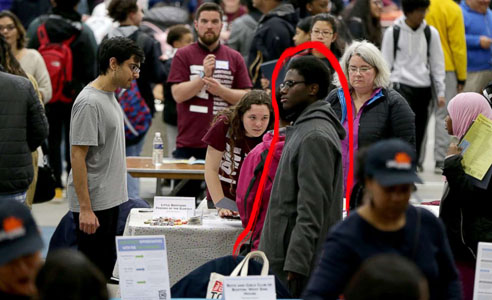
The black unemployment rate peaked at 16.8 percent in March
2010, and during that year, unemployment rates for black men specifically
in some major U.S. cities, such as Chicago, New York, and Los Angeles, peaked higher then 30%,an unimaginable reality for any person of working age.
According to the’ Council of Economic Advisers’ (CEA) “there has historically been a wide gap in employment rates between black and white prime-age adults” and that “it currently appears to be driven primarily by the employment disparity for males across the two races, rather than females.”
Economists also point to systemic biases in hiring and
firing that puts black workers at a disadvantage, this gap in employment is due in much
part to “labor market discrimination,” the “first fired, last hired” phenomenon,
and “the lasting effects of higher incarceration rates among black males.”

PART 2: WORKING AGE BLACK MEN WORKING FOR THE STATE, IN PRISON.
Now, when discussing black men of working age (15-53 years old), we
must take note of the black American prison populations, that is currently at
487,300. Black Americans account for 12% of the U.S. adult population, yet
blacks make up 33% of America’s federal and state prison inmates, which is more
than twice their share of the U.S. population.
In contrast, whites accounted for 64% of adults in the U.S.
but 30% of prisoners, according to the Pew Research Center.
Incarcerated people are not counted in unemployment figures.
If they were to be, the unemployed numbers would jump, particularly for blacks,
say many economists. This lack of working age black men in the job market is
destroying black families and communities nationwide.
PART 3: THE WEALTH GAP
THAT KEEPS BLACK WORKERS DOWN.
The jobs that black workers and white workers get do not pay
the same, and all data shows that black workers earn less money and build less
wealth than white workers. The typical full-time black worker still earns about
$12,000 less annually than a white worker.
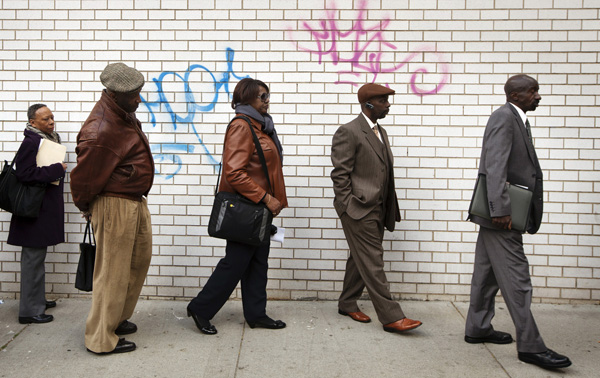
In addition to wages, wealth disparities between black and
white workers are even more disturbing. In 2016, the median wealth of white
Americans was $142,180 compared to $13,460 for black Americans. Currently, the
median black household has about 10 percent of the wealth of the median white
household.
Wealth, which is calculated by combining a person’s home value, savings, and investments, is a cushion that helps families keep themselves afloat during periods of unemployment. And during the 2007 mortgage crisis Black home ownership took a major hit. Today blacks own approx. 32% less homes as compared to white households. Even when black Americans do become homeowners, if the neighborhood they reside is more than 50% black, their homes are valued at nearly half the price of similar homes in mostly white communities.
PART 4: THE REALITY OF THE
NUMBERS STATE BY STATE, CHECK OUT ILLINOIS.
Although president Trump celebrates low unemployment numbers
for blacks, and at every chance spews out the statistics that he has brought
down black unemployment. The White House has not directly addressed the employment
and wage gaps between black and white workers any manner. Nor has the previous
administrations of Barrack Obama, Bush 1&2, Clinton, or any of the other
administrations over the past 40+ years.
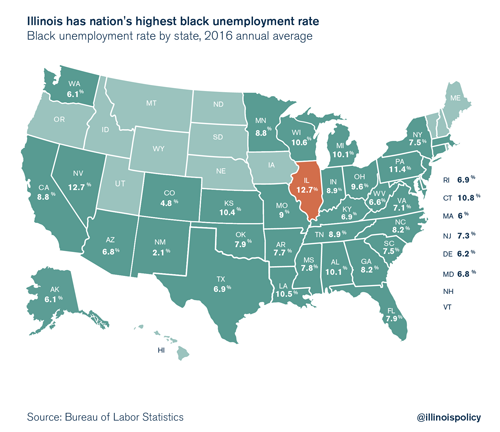
In fact, when further examining black unemployment numbers across the United States we find several states such as Illinois and Nevada that have the highest black unemployment rates in the U.S. according to annual unemployment data released by the federal Bureau of Labor Statistics (BLS).
Illinois’ 12.7 percent black jobless rate is the highest in the U.S., tied with Nevada. However, Illinois’ black population is seven times as large as Nevada’s, meaning Illinois’ crisis is playing out on a much larger scale.
The number of black people working in Illinois has been in
decline since the year 2000. There were 77,000 fewer blacks working in Illinois
in 2016 compared with 2000, a shocking 10% decline in total employment. By
comparison, white & Hispanic employment in Illinois is actually up by
272,000 since 2000, according to the BLS.
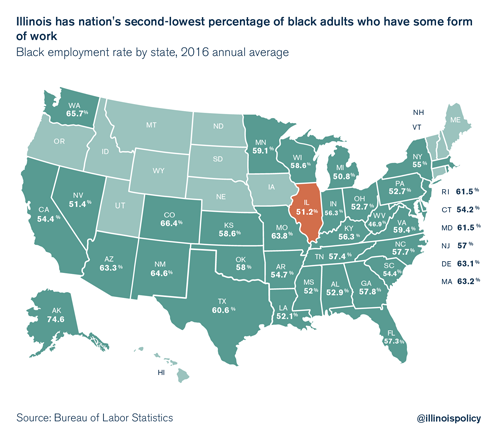
Several other U.S. states show that under 60% of black workers between the ages 35-53 are employed:
West Virginia - 46.9%
Michigan - 50.8%
Illinois - 51.2%
Nevada - 51.4%
Mississippi - 52%
Louisiana - 52.1%
Alabama - 52.9%
Pennsylvania - 52.7%
Ohio - 52.7%
Connecticut - 54,2%
South Carolina - 54.4%
California - 54.4%
New York - 55%
Kentucky - 56.3%
Indiana - 56.3%
Florida - 57.3%
Tennessee - 57.4%
North Carolina - 57.7%
Georgia - 57.8%
Oklahoma - 58%
Wisconsin - 58.6%
Kansas - 58.6%
Montana - 59.1%
Virginia - 59.4%
THESE NUMBERS OF BLACK EMPLOYMENT IN SEVERAL STATES IS AT CRISIS LEVELS, yet many state Assemblies and governors have largely ignored these statistics.
BLACK WORKERS DESERVE MORE, THEY DESERVE BETTER!
Even as the U.S. economy continues to grow, black workers still see their wages stagnant, their working age men locked in cages and unable to earn a living wage for their families, and black home ownership considerably lower than white workers, and Hispanic workers.It will take more than a couple of years of Trump’s economy to close the nations historic racial wage gaps, and compensate for years of lower incomes, and lower wealth for black workers.
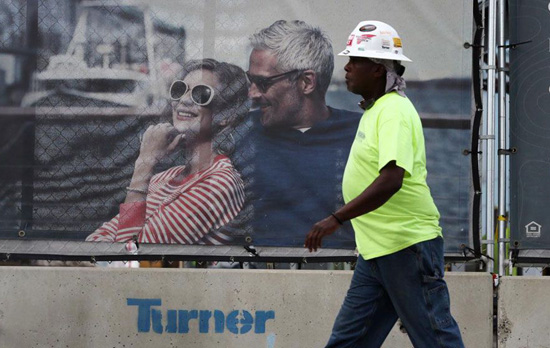
“We should never celebrate the fact that black folks are
just working,” said Andre M. Perry, an expert at the Brookings Institute, told
the Washington Post in an interview. “It’s like saying: ‘Look, you have a job.
Why should you complain?’ And I think that’s what Trump is signaling. He’s
saying to the black community, 'Look what I’ve given you,’ and not necessarily
saying, ‘Let’s look at the percentage of people in poverty, let’s look at the
percentage of people rising to the middle class.'
“Are black folks getting the kinds of jobs that are
propelling them to the middle class? No, they are not,” says Perry. “You still
see that gap in the unemployment rate, and you still see that gap in median
income.”
The attack on Pearl Harbor in Hawaii on December 7, 1941,
would bring the United States into World War II, but it also raised a concern
that the U.S. Territory of Alaska was vulnerable to Japanese attack. The Aleutian
Islands off southwest Alaska were closer to Japan than any point in North
America. In the event of a Japanese invasion, the Alaska-Canada highway (ALCAN) would be
necessary to protect Alaska civilians.
Overland travel by car, truck, or train between the United
States and the Alaskan territory at that time was just not possible due to the
rugged topography, and Canada did not have an incentive to build a connecting
road through its territory north of Dawson Creek.
So, in 1942, President Franklin Roosevelt along with the
Canadian government authorized the construction of the Alaska-Canada Highway
(ALCAN) to connect Alaska to the continental United States.
Construction of the highway begin on March 8, 1942, but, in order
for this highway to prove effective, the speed in which it was constructed was
essential to the military’s needs; the Alaska-Canada Highway needed to be built
in 8 months’ time.
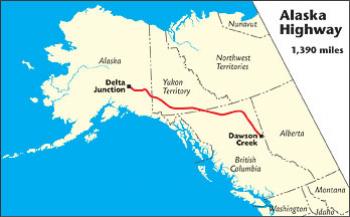
To complete this grueling highway in just 8 months, the U.S.
government hired private contractors and also commissioned the Army Corps of
Engineers. Due to World War II, many members of the Army Corps of Engineers
were in the South Pacific assisting with war efforts. This led to the need for
more manpower to complete the administration’s ambitious Alaska Highway
project. As a result, the War Department led by Colonel William M. Hoge, took
the historic step of deploying Black/African-American regiments of the Army Corps of
Engineers.

Approximately
5,000-7,000 of the initial 11,000 troops assembled to complete the highway and
install the companion Canol pipeline were Black. There were four regiments of
African-American engineers involved in building the Alaska-Canada Highway, the
93rd Engineer General Service Regiments, the 95th Engineer General
Service Regiments, the 97th Engineer General Service Regiment and the 388th
Engineer Battalion. Theirs were the first black regiments deployed outside the
lower 48 states during the war.
In the interest of speed, officials decided to build the
road in two phases. A pioneer road would be carved out of the difficult terrain
in 1942 to open the route for supply trucks by year's end. The U.S. Army Corps of Engineers was to build
the pioneer road, with Army engineering units and private contractors. Initially, the Army divided the 1,500-mile project into
five segments, with private contractors responsible for the portion from Whitehorse
to Big Delta, about 560 miles. But after proving to be a very difficult feat to
complete, the contractors work was extended by 100 miles to the east.
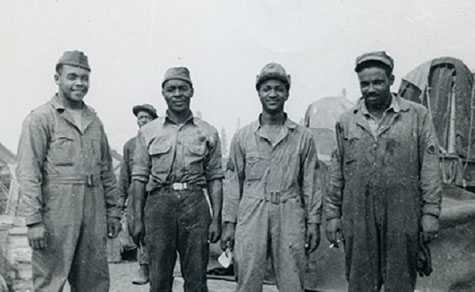
Since approval of the Selective Service Act of 1940, Black
American soldiers had been drafted into the Army on the same terms as whites,
but as Heath Twichell explained in his book on the Alaska Highway,
"Segregation's legacy of bigotry and prejudice severely limited the
possibilities" for the work they would do:
“As a result, relatively few black infantry, armor, or artillery
units were organized during World War II… In the end, black soldiers were assigned to
more than their share of units engaged in low-tech, high-sweat duties in the
Engineers and Quartermaster Corps. Although the Corps of Engineers put most of
its new black soldiers into general-purpose construction battalions and regiments,
shortages of heavy equipment sometimes resulted in the black units' being
issued fewer bulldozers and more shovels and wheelbarrows than the white units
got.”
Another touchy issue was where to station the new black
units. In the United States, military leaders felt they had to worry about the
impact of large numbers of young black soldiers on nearby civilian communities.”
[Northwest , p. 97-98]
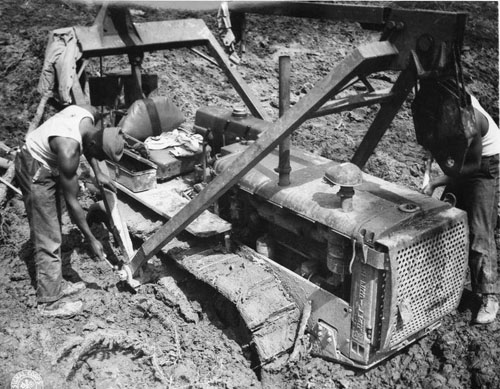
The enlisted men, most of them from the South, faced racial
discrimination from white officers. The black soldiers were barred from
entering any towns for fears from white soldiers that they would procreate a “mongrel”
race with local women.
During the construction of the highway, the black American
soldiers endured winter conditions they had never experienced before, including
record low temperatures, the temperatures ranged from 90 degrees above zero in
summer to 70 degrees below zero during the winter. The black troops also had to fight swamps,
rivers, ice and cold, whiles battling the segregation with in their own corp.
Jim Sutton, a white American soldier who had worked on the highway project
alongside the blacks stated:
"They were up here when we got up here. We were put in barracks, wooden barracks, and we had stoves and everything. These poor black people were doing the same job as we were and they had them in tents. I didn't think that was really fair."
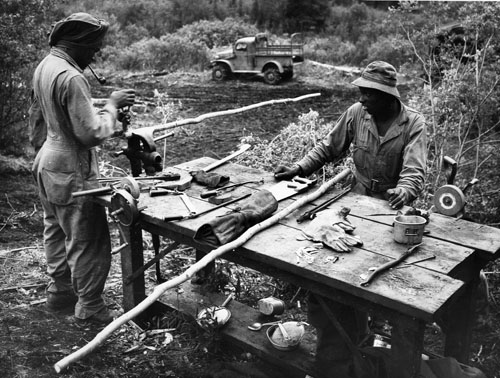
Housing wasn’t the only form of injustice the black soldiers
faced, but many times struggling through long difficult trips to reach the project
site with their equipment, the black American troops found that their best equipment
would be shifted to the white units.
Although, in practice the African-Americans were involved in many phases of construction, often never working with the white troops, but performed the more grueling labor intense work, while white troops sometimes less skilled, managed and directed. For this reason, many of the soldiers felt they were fighting two wars, one against the Axis (Japan, Germany and Italy) and a second against segregation.

After cutting an access road over Mentasta Pass from Slana
to Tok, the all black 97th Engineers battalion was used to perform the grueling work of speeding
the opening of the northernmost third of the Alaska Highway by helping the
private contractors and the 18th Engineers close the gap between Whitehorse and
Big Delta. Similarly, after opening a trail from Carcross to help the 340th
Engineers reach Teslin, another all black battalion of the 93rd Engineers
would start work on the pioneer road from that point toward Whitehorse, during
freezing conditions.

With private contractors and Army engineering units working on segments of the Alaska Highway, gaps began to close in August. By the end of September, only the most difficult sections, through eastern Alaska and the southwest corner of the Yukon, remained to be completed. [North to Alaska , p. 130]
The final gap was closed on October 29, 1942, south of Kluane Lake. Coates quoted Malcolm MacDonald, British high commissioner to Canada, on the final moments:
The final meeting between men working from the south and men working from the north was dramatic. They met head on in the forest. Corporal Refines Sims, Jr., a negro from Philadelphia [of the 97th Engineers] . . . was driving south with a bulldozer when he saw trees starting to topple over on him. Slamming his big vehicle into reverse he backed out just as another bulldozer driven by private Alfred Jalufka of Kennedy, Texas, broke through the underbrush. Jalufka had been forcing his bulldozer through the bush with such speed that his face was bloody from scratches of overhanging branches and limbs. That historic meeting between a negro corporal and white private on their respective bulldozers occurred 20 miles east of the Alaska-Yukon Boundary at a place called Beaver Creek. [North to Alaska , p, 130-131]

One of the greatest accomplishment of the black troops was Sikanni
Chief River Bridge. The Sikanni Chief River is a fast-moving river that is over
300 feet wide located about 162 miles outside of Dawson Creek, Canada. The
African-American engineers built the bridge without heavy equipment, utilizing
minimal supplies and in miserable conditions. They used hand tools, saws, and
axes to build the bridge in less than three days using lumber from nearby
trees.
During some phases of the bridges construction the black
troops had to plunge chest deep into the river’s freezing and rapidly moving
waters to set trestles. The soldiers used the headlights of trucks to keep
working at night while singing work chants and chain gang songs. Despite the
military still being segregated, after witnessing this amazing feat, Col. Heath Twichell Sr. ordered his white
officers to eat with the black enlisted men.

Over the years, as public attitudes changed, the
African-Americans who helped build the pioneer trail received recognition for
their accomplishment. Brinkley interviewed some of the veterans:
“They all talked to me about duty for country and reminisced about their harsh living conditions, tasteless food, and bitter winters where frostbite was their primary foe. Stories about wading chest deep into freezing lakes to erect bridge trestles or having a finger fall off when the temperature hit a record -70o F or lowering the coffin of a comrade into the cold ground conjured bleak memories of Jack London's most brutal tales like "To Build a Fire" or "Burning Sun." Snowdrifts were often twenty feet deep. "For months on end, I couldn't get a real night's sleep," one veteran recalled. "I had nightmares I was freezing to death." Although these black soldiers had at their disposal 11,107 pieces of equipment, trucks, tractors, crushers, graders, and bulldozers, breakdowns occurred hourly. The job was daunting. Never before, it seems, had so many survey sticks been hammered into the earth at a given time. To keep morale up they often chanted old southern work tunes like "Steel-Driving Song" and "Swing Low, Sweet Chariot." With brawn and courage and valor they persevered, completing the Alcan Highway in just over eight months, with the official opening on 21 November 1942. [Alcan , p. 10]

The African-American regiments that built the Alaska-Canada
Highway established a reputation for excellence especially in the field of
bridge building. However, their accomplishments were consistently ignored by
mainstream media and press. It took decades for them to receive proper
recognition for their achievements. Some say they were as “legendary” as the
Tuskegee Airmen and the Buffalo Soldiers.
Many people attribute the success of these African-American
engineers during the Alaska-Canada Highway project as one of the events that
led to eventual desegregation of the military in 1948. Some call the ALCAN
Highway the “Road to Civil Rights” for this reason.
After just over 8 months , the Alaska-Canada Highway (ALCAN)
was completed on November 21, 1942. The ALCAN highway project is still
considered one of the biggest and most difficult construction projects ever
completed by the US Army Corps of Engineers. It stretches 1,422 miles from
Dawson Creek, British Columbia in Canada to Big Delta, Alaska. The project cost
about $138 million dollars and was the most expensive World War II construction
project.
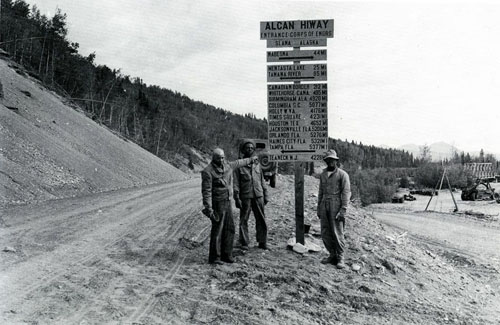
Approximately 30 men died during the Alaska-Canada Highway construction project. In 1992 there were over 2,000 different celebrations held to commemorate the highway's 50th anniversary, but none of them honored, and most hardly mentioned, the black units who represented one of the projects largest portions of manpower. James Eaton, curator of the Black Archives Research Center and Museum at Florida A&M University in Tallahassee, called the soldiers, "A lost page in history."
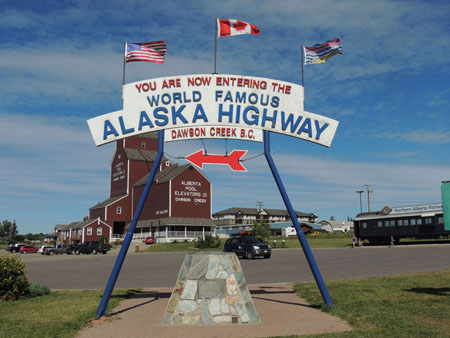
On July 4, 1992, the city of Anchorage, Alaska invited several of the veteran black troops from the corp. of engineers to participate in the city's parade down Main Street. Two of them, Albert E. France andDonald W. Nolan, Sr., were from Baltimore. France was a 75-year old retired railroad worker, while Nolan was a 72-year old retired postal worker, both recalled in a newspaper interview, the first thing they remembered from working on the Alaska-Canada Highway was the cold:
"It was awful
cold and it snowed for days," recalled Mr.France . . . . It was the
coldest winder on record in the territory.
"Leather would freeze," recalled Mr. Nolan . . . .
"We'd take galoshes, rubber galoshes - we called them 'Arctics' - and we'd
wear three, four pairs of socks we would double up on pants. We slept on the round
in pup tents."
“Food was never plentiful. C-rations, bittersweet chocolate
and "hardcracks" might be all a soldier would get to eat after the
harsh climate cut off supply routes.”
"We'd kill a bear, a huge black bear," said Mr.
Nolan,"about 9, 10 feet high, and those chops were delicious."
When the snow stopped, the rains started and the rivers swelled.
In summer, mosquitoes droned like airplanes and the "muskeg," a
uniquely Alaskan bog, swallowed tractors… In that barren landscape, the
off-work hours could seem exceptionally long.
Looking back, Nolan said he was glad to have served on the project. "You have something to tell your kids." [The Baltimore Sun , July 4, 1992]
Memorials for the black soldiers that helped in the competition
of the ALCAN Highway are scattered along
the highways 1,400 miles path. One of the most recognized memorials is the‘Black
Veterans Memorial Bridge’ which was dedicated in 1993 to the African-American
engineers who died during the construction project.
Congress in 2005 said that the wartime service of the four
regiments covered here contributed to the eventual desegregation of the Armed
Forces.
After four decades of operation, the largest black-owned construction company in the United States, THOR Construction companies, a Minneapolis-based contracting and management firm is shutting down, according to its founder & chairman, Richard Copeland.
After experiencing explosive growth over the last 2 years, THOR construction company will be ending operations. THOR in 2017 had revenues of $368 million, up 162% from $140 million in 2016. According to THOR, just under $197 million came from the acquisition of JIT Energy Services, a minority-owned energy management and utility cost reduction services firm, for an undisclosed amount.
This year, THOR Companies reportedly begin to revamp its
business model in an attempt to overcome some financial challenges. In this
effort, THOR hired Manchester Cos. as its chief reorganization officer, as it
worked to salvage its financial affair. Manchester, which is also based in
Minneapolis, is known for turning around and restructuring companies.
However, in January of 2019, Sunrise Banks sued THOR and its
founder and chairman Richard Copeland, pursuing restitution exceeding $3
million. The bank requested that a receiver be appointed to take control of
THOR, according to a lawsuit filed in Hennepin District County Court in
Minnesota.
The St. Paul, Minnesota, Sunrise bank claimed that THOR “is
generally not paying its debts as they become due, including payroll
obligations to its employees and its debts to Lender. As a result of this
lawsuit, multiple creditors will likely attempt to engage in a ‘free-for-all
liquidation’ of THOR construction Co.
Although, according to Copeland, “THOR has never missed a
payroll in 40 years to date. We have several companies rallying around this effort;
however, the bank has done everything in its power to put us in receivership.”
In law, receivership is a situation in which an institution
or enterprise is held by a receiver—a person "placed in the custodial
responsibility for the property of others, including tangible and intangible
assets and rights"—especially in cases where a company cannot meet
financial obligations or enters bankruptcy.
In an interview with the Star Tribune in Minneapolis a few
months ago, Copleland said: “We’ve struggled in a tough industry with some of
the best contractors in the world as our competition. We cobbled along for 40
years and never had anything like this happen. We hope to attract new money and
are poised with good customers to do well.”
“We have had a credit line with Sunrise Bank for 11 years.
The LOC [line of credit] was to expire on 12-31-18. The LOC was as high as $5.8
million, but over the last two years, we had reduced the line by $2.8 million
down to $3 million. We also believe that almost half of the $3 million line
remaining, that $1.3 million of it were not legitimate,” Copeland said in an
interview with Black Enterprise magazine.
Yet, as if things couldn’t get worst, in February of this year THOR’s CEO, Ravi Norman (pictured above), stepped down from the company. Norman told the Minnesota publication ‘Finance & Commerce’ that he is no longer an employee at THOR. Norman worked at THOR for several years, serving in CEO and CFO roles at the business.
The closure of THOR construction Co. comes after THOR
celebrated the opening of a new headquarters, a $36 million office/retail
building in north Minneapolis in September of 2018.
THOR Cos. Co was a model contractor admired not only by
other black-owned companies, but by most major contractors for its performance,
and will be greatly missed in the construction industry.
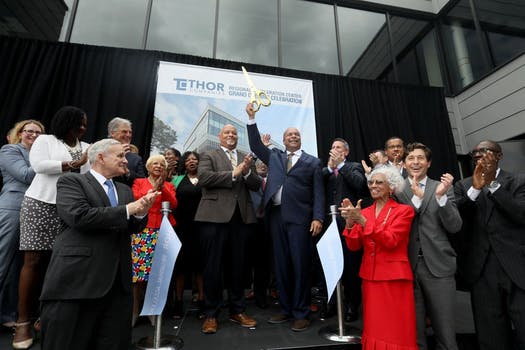
A brief History of
THOR construction Co.
Established in 1980, THOR had previously been involved in
some of the Twin Cities biggest construction projects, such as the U.S. Bank
Stadium and the University of Minnesota’s TCF Bank Stadium, among others. THOR
though most of its business came from work it did out of state.
In early 2017, THOR was selected as a key partner in the redevelopment
of the Upper Harbor Terminal, after the Minneapolis City Council and the
Minneapolis Park and Recreation Board approved, the plans to build hundreds of
units of housing; thousands of square feet for manufacturing, offices, shopping
and restaurants; a public park; and most notably, a performance venue in the
form of a 8,000-10,000 seat outdoor amphitheater.
Over the last 40 years THOR managed to keep its head above
water, while other contractors quickly sank. THOR also was one of the most diverse
construction companies in the industry with an active grassroots recruitment
effort that helped them tap into the black community to hire workers.

Through hard work and dedication THOR Construction evolved
into one of the largest black-owned construction companies in the nation. Along
with their office in Minneapolis, the contractor increased its national
footprint as a full-service self-performing concrete contractor by opening an
office in Las Vegas.
Key THOR self-preforming projects in Las Vegas included
T-Mobile Arena ($375 million), and Mandalay Bay ($66 million).
THOR’s portfolio of self-performing concrete projects also includes
work across a wide spectrum, with a major emphasis on sports facilities and
arenas, along with, hospitality and gaming, mass transit, commercial buildings,
factories, highways, and heavy infrastructure.
The contractor is a part of the Associated General
Contractors, National Association of Minority Contractors, and the U.S. Green
Building Council.
As soaring numbers of construction workers battle opioid addiction,
building trades leaders across the U.S. are launching solutions intended to show
contractors and union members how they can help those who are hooked on opioids.
“We don’t push someone away who gets cancer or diabetes; we
shouldn’t get rid of someone who suffers addiction,” said Thomas Gunning III,
director of labor relations for the Building Trades Employers’ Association.
“It’s a disease of the mind, and we want to help them,” he
said, according to the Boston Globe.
Yet, for decades when it came to marijuana usage, pushing
away and completely ostracizing workers is exactly what contractors and union
have done, and continue to do. So why are contractors forming coalitions to
battle opioid addiction, and trying their hardest to retain those workers that
are addicted.
But, some are arguing that this concerted effort of
retaining and offering resources to opioid addicts is because statistically this
type of drug abuse mostly affects white/Caucasians construction workers.
In recent years, many states in the U.S. have loosened up
their regulation and restriction laws related to cannabis, or marijuana, with
33 states and Washington, D.C., currently allowing it for medical reasons. Ten
of those states and D.C. allow adult recreational use.
Although, for the majority of major U.S. contractors and
labor unions, this new status of marijuana, which used to be an illegal
substance, has not persuaded them to loosen their restrictive hiring practices,
and drug testing for the substances THC & CBD.
In most cases, to align themselves with the wishes of their
clients, many large construction companies have decided that a positive drug
test is a reason not to hire or, under some conditions like an accident, a
reason to terminate employment. Even where it’s legal.
This type of enforcement of anti-drug policy has
historically punished and prevented many black construction workers from
entering the industry, and building lasting careers.
However, as far as opioid abuse is concerned, which the
federal government has described as a “crisis”, and in 2017 accounted for more
than 47,000 deaths, contractors from across America are organizing in an effort
to break down, what they describe as a “stigma” surrounding opioid abuse.
Among other goals, contractors and trade associations are
even going as far as to call for ‘Narcan’ to be available at all job sites to
help prevent opioid overdose deaths.
According to the Boston Globe, Kevin Gill, president of McCusker-Gill Inc., a
sheet-metal contractor that employs 200 workers, said Narcan will be provided
at his company’s fabrication shop.
Gill explained to the Globe, “It’s a very tough trade. Workers
may have been given a painkiller to offset an injury, and before they know it,
they have a full-blown addiction,”
“I want them to be comfortable to come to us to share their
problem and work with us to hopefully come up with a solution,” Gill went on to explain.
Studies show that opioid abuse costs construction companies
billions every year, in missed workdays, healthcare expenses, job turnover and
the costs of recruiting and retraining new employees.
Medical experts note that marijuana is significantly less
addictive and it doesn’t lead to overdoses. A recent study revealed that 93
percent of respondents found marijuana to be a more effective pain treatment
that produced fewer side effects than opioids, and is a less costly treatment
than opioids.
Given the nature of federal law versus state law, it’s hard
to tell if construction employees will ever be allowed to use prescribed
medical marijuana instead of opioids.
Moreover, construction companies under federal contracts are
responsible to adhere to restrict regulation concerning marijuana testing. For
example, if you employ individuals who use a commercial driver’s license you
have to follow the drug testing rules from the Department of Transportation and
the Federal Motor Carrier Safety Administration (FMCSA).


